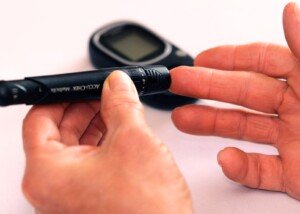
Did you get one fasting glucose reading over 100 and under 126 and are now panicking that diabetes will soon be a part of your life?
“One individual reading of a fasting glucose over 100, does not impart a diagnosis of prediabetes,” says Richard Kelley, MD, a practicing physician in Texas for 20+ years, and author of “The Fitness Response,” “The Three-Hour Appetite” and the ebook, “The Fitness Response ‘Diet’ for Women.”
Dr. Kelley continues, “However, it is generally felt that two or more fasting glucose tests which fall above 100 and below 126 on two different days, would be reasonable to assess as prediabetes.”
Research in the field of how sleep impacts glucose metabolism is relatively young, but the research results are solid, including the report in a 2010 Journal of Clinical Endocrinology & Metabolism that just one night of sleep deprivation can cause insulin resistance, a type of prediabetes that’s a forerunner of type II diabetes.
If your fasting glucose is over 100 and under 126, don’t panic. Evaluate your sleeping habits.

Has your sleep been disrupted lately due to anxiety?
Chronic stress can also cause a higher than normal fasting glucose result.
Ongoing stress/anxiety causes blood sugar to rise, to be available as a quick energy source for muscles —the body interprets stress as a sign of an imminent fight or flight.
The fight or flight response uses up the sugar and restores normal chemical balance.
In our modern world, people don’t fight or flee; they sit and seethe.
The blood sugar (glucose) remains elevated, always on standby for a fight or flight that never occurs.

Regular gym workouts may not be enough to lower blood sugar below 100 in some of these cases.
“By the same measure, two different fasting glucose tests that are done on different days, and found to be 126 or higher, and especially if one is symptomatic (increased thirst and urination, weight loss, easy fatigue) is generally enough to assess a diagnosis of diabetes,” adds Dr. Kelley.
“Symptoms of diabetes tend to be more prominent the higher and longer blood glucose levels remain outside of the norms for a healthy blood glucose range.”

 Richard Kelley, MD,
Richard Kelley, MD,
























